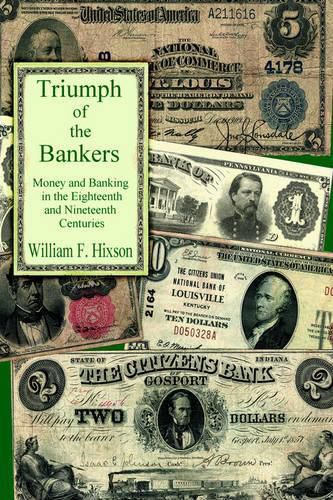Readings Newsletter
Become a Readings Member to make your shopping experience even easier.
Sign in or sign up for free!
You’re not far away from qualifying for FREE standard shipping within Australia
You’ve qualified for FREE standard shipping within Australia
The cart is loading…






…the government could have been debt free long before 1914, could have saved billions of dollars in interest, and could have had billions remaining for public improvements or for reductions in taxes. But the bankers triumphed over common sense and the public interest: banks created money apace, and the government created none. A more inane and shameful abnegation of government power is hardly imaginable. William F. Hixson This book discusses crucial monetary events in Colonial America, the United States, and Great Britain over the period 1690 to 1914. It explains some general characteristics of money and its function, the impracticality and undesirability of a gold or silver standard, and how a change in the quantity of money affects the total output of an economy and the level of prices of goods and services. It argues that by 1914 bankers had virtually complete control of the money-creation process and that this was largely the cause of the cataclysm of 1929 and the ensuing years. It contends that the system is still in effect. Journal of Economic Literature Vol.32, No. 1, March 1994 Anyone who seeks to understand the preposterous financial system which evolved after 1690 cannot do better than to start here. Hixson interweaves economic history with evaluations of theories of the leading economists starting with Adam Smith… The chapters on the financing of the American Revolution and the Civil War are particularly fascinating. Dr. John H. Hotson Department of Economics University of Waterloo, Ontario
$9.00 standard shipping within Australia
FREE standard shipping within Australia for orders over $100.00
Express & International shipping calculated at checkout
…the government could have been debt free long before 1914, could have saved billions of dollars in interest, and could have had billions remaining for public improvements or for reductions in taxes. But the bankers triumphed over common sense and the public interest: banks created money apace, and the government created none. A more inane and shameful abnegation of government power is hardly imaginable. William F. Hixson This book discusses crucial monetary events in Colonial America, the United States, and Great Britain over the period 1690 to 1914. It explains some general characteristics of money and its function, the impracticality and undesirability of a gold or silver standard, and how a change in the quantity of money affects the total output of an economy and the level of prices of goods and services. It argues that by 1914 bankers had virtually complete control of the money-creation process and that this was largely the cause of the cataclysm of 1929 and the ensuing years. It contends that the system is still in effect. Journal of Economic Literature Vol.32, No. 1, March 1994 Anyone who seeks to understand the preposterous financial system which evolved after 1690 cannot do better than to start here. Hixson interweaves economic history with evaluations of theories of the leading economists starting with Adam Smith… The chapters on the financing of the American Revolution and the Civil War are particularly fascinating. Dr. John H. Hotson Department of Economics University of Waterloo, Ontario